Abstract
Naturally occurring Trypanosoma theileri infection was studied in two cattle herds. Herd A was a dairy herd of approximately 250. Herd B was an isolated herd of 32 and contained both dairy and beef breeds. Blood samples were collected from all animals in Herd A during July and August on two successive years. Samples were collected from Herd B at monthly intervals. Total leukocyte and differential counts packed cell volume determinations, and trypanosome cultures were made on each sample.
Infection was detected in all age groups between seven months and fifteen years but it was rare in calves. Infected animals were not consistently positive for trypanosomes on consecutive blood cultures and there was considerable variation between infected individuals. Positive cultures were usually obtained from some animals while others were positive intermittently. No correlation was found between trypanosome isolations and the season of the year.
A correlation was found between trypanosome isolation and lymphocytosis. Of the 920 blood samples examined, approximately one in every five trypanosome positive samples had lymphocyte levels in the Bendixen positive range. Approximately one in every twenty trypanosome negative samples had lymphocyte numbers in the Bendixen positive range. Evidence indicated that trypanosome isolation from animals with lymphocytosis was not caused by increased numbers of infected buffy coat cells in the inoculum cultured.
Eight calves were inoculated intravenously with trypanosome-infected blood. Lymphocyte numbers increased an average of 3549 per cumm above pre-inoculation levels in seven and remained essentially unchanged in one. Prior to inoculation with infective blood, two of the calves were intravenously inoculated with trypanosome-infected blood that had been frozen and thawed to kill the trypanosomes contained in it. Neither developed lymphocytosis following this inoculation.
No clinical disease problems which could be attributed to trypanosome infection were found.
Full text
PDF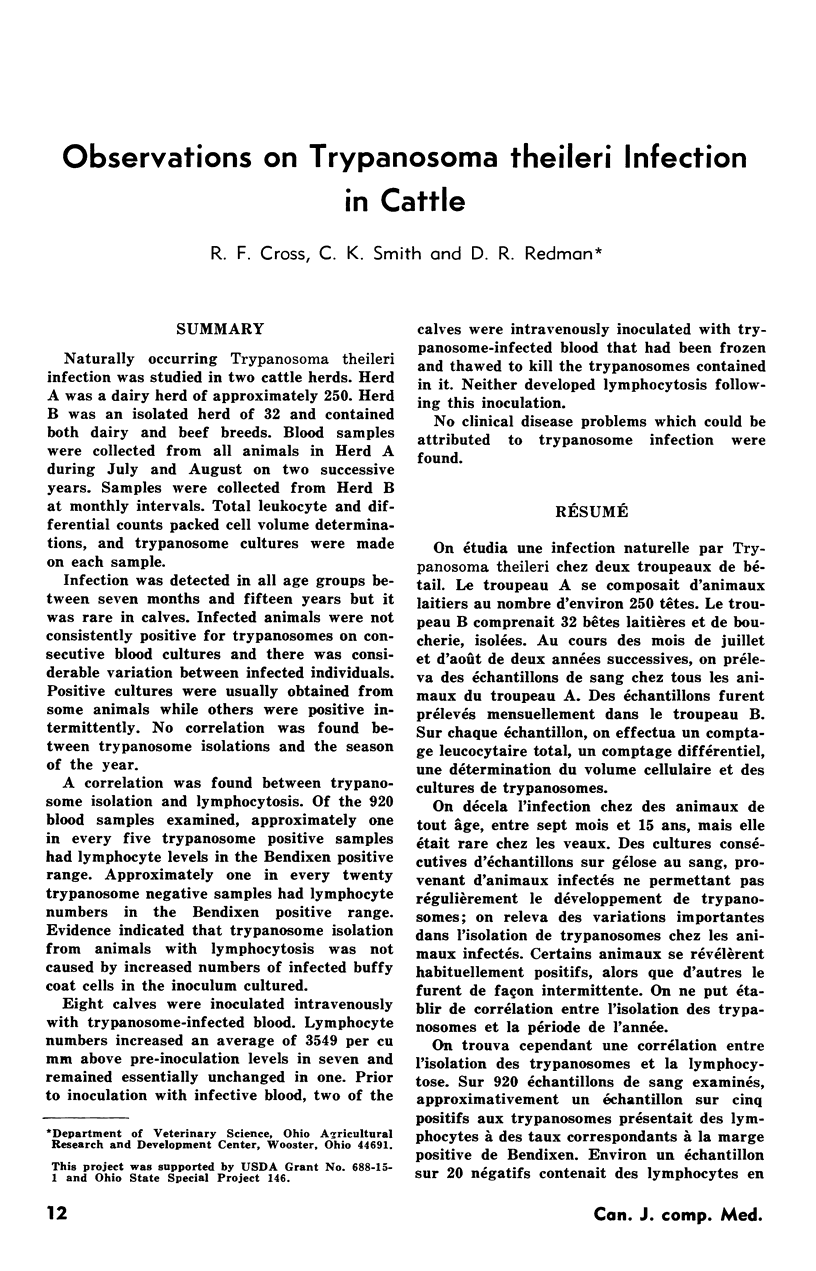
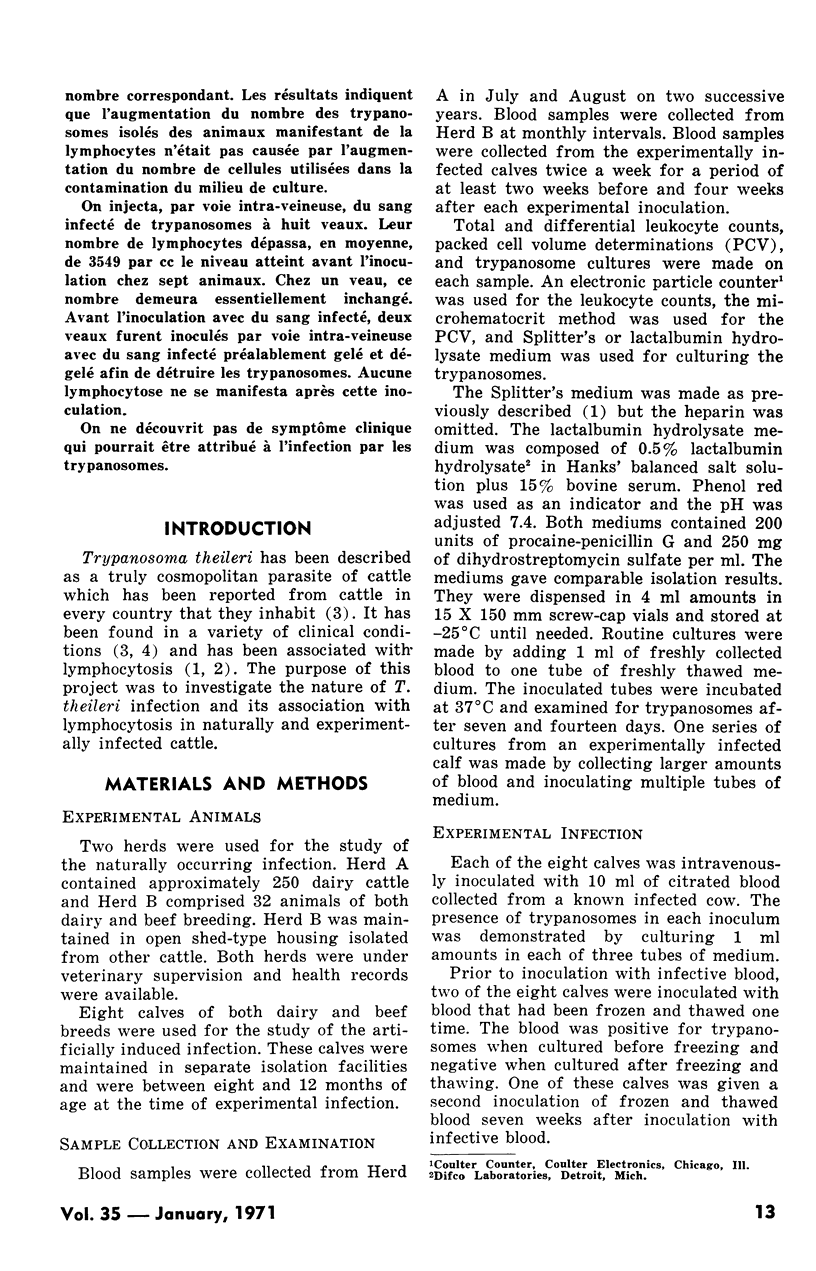
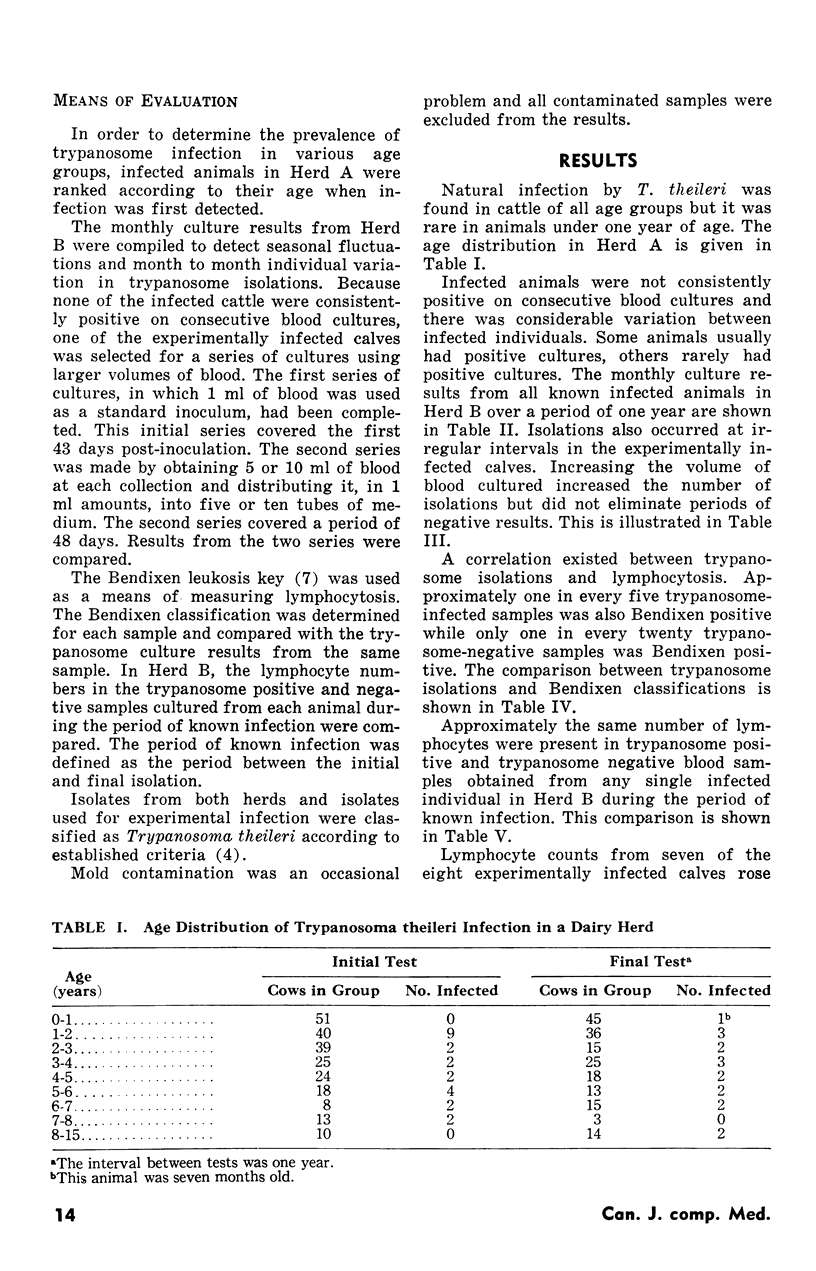
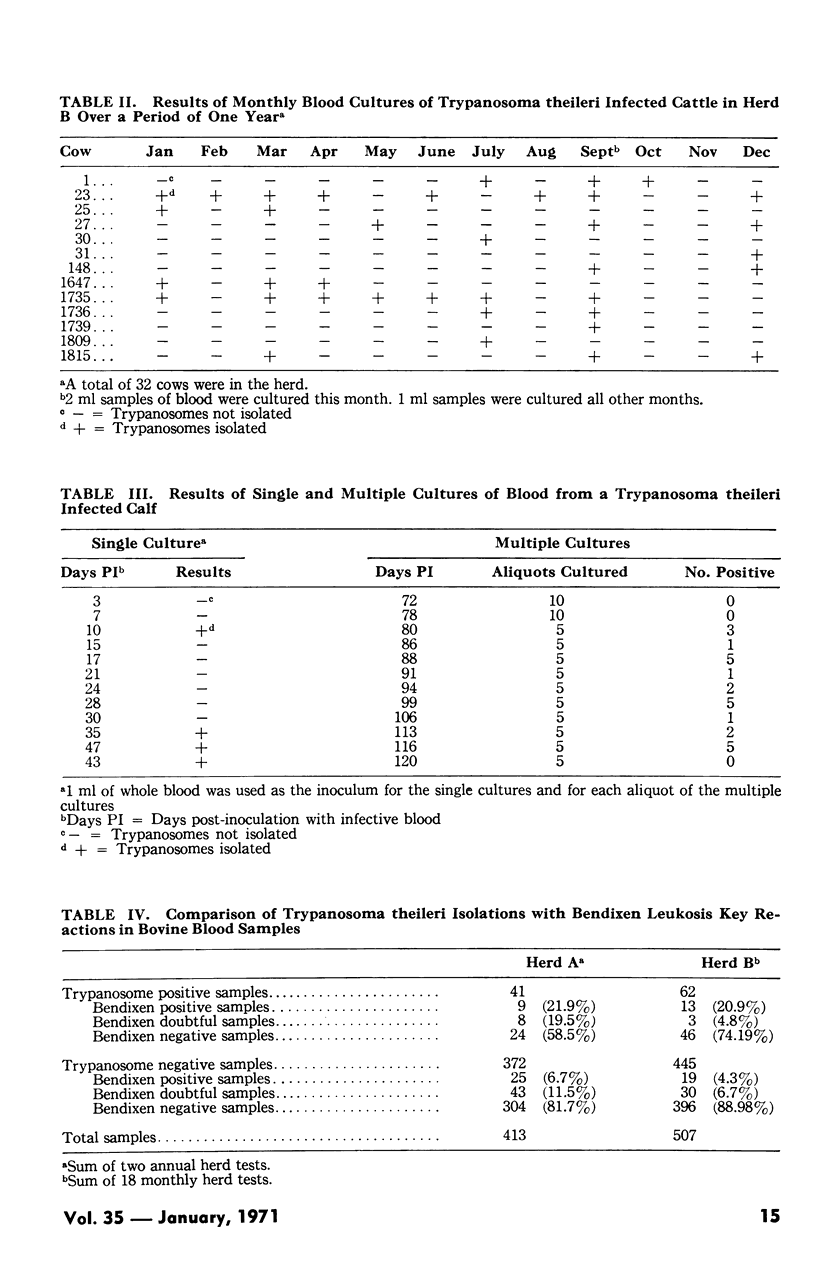
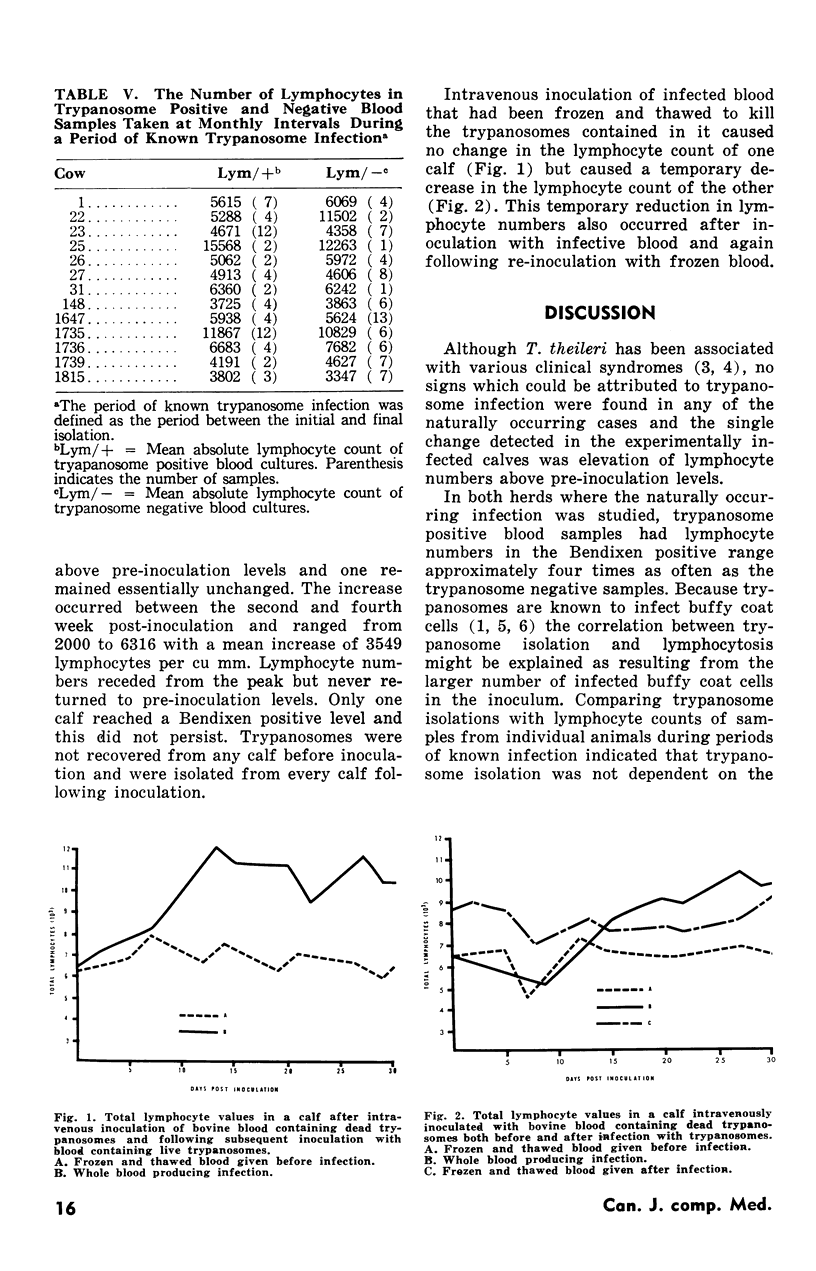
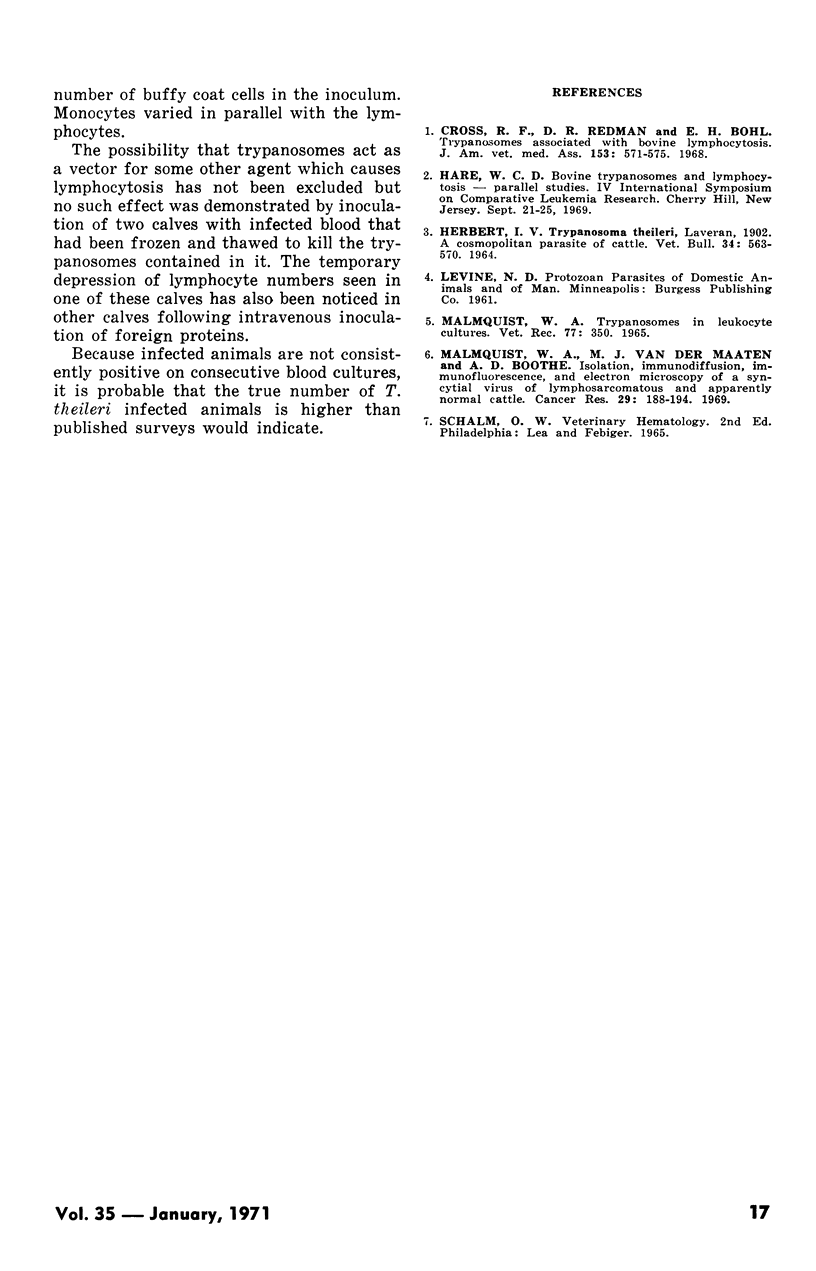
Selected References
These references are in PubMed. This may not be the complete list of references from this article.
- Cross R. F., Redman D. R., Bohl E. H. Trypanosomes associated with bovine lymphocytosis. J Am Vet Med Assoc. 1968 Sep 1;153(5):571–575. [PubMed] [Google Scholar]
- MALMQUIST W. A. TISSUE CULTURE OF CANINE DISTEMPER VIRUS. Vet Rec. 1965 Mar 20;77:349–350. [PubMed] [Google Scholar]
- Malmquist W. A., Van der Maaten M. J., Boothe A. D. Isolation, immunodiffusion, immunofluorescence, and electron microscopy of a syncytial virus of lymphosarcomatous and apparently normal cattle. Cancer Res. 1969 Jan;29(1):188–200. [PubMed] [Google Scholar]


